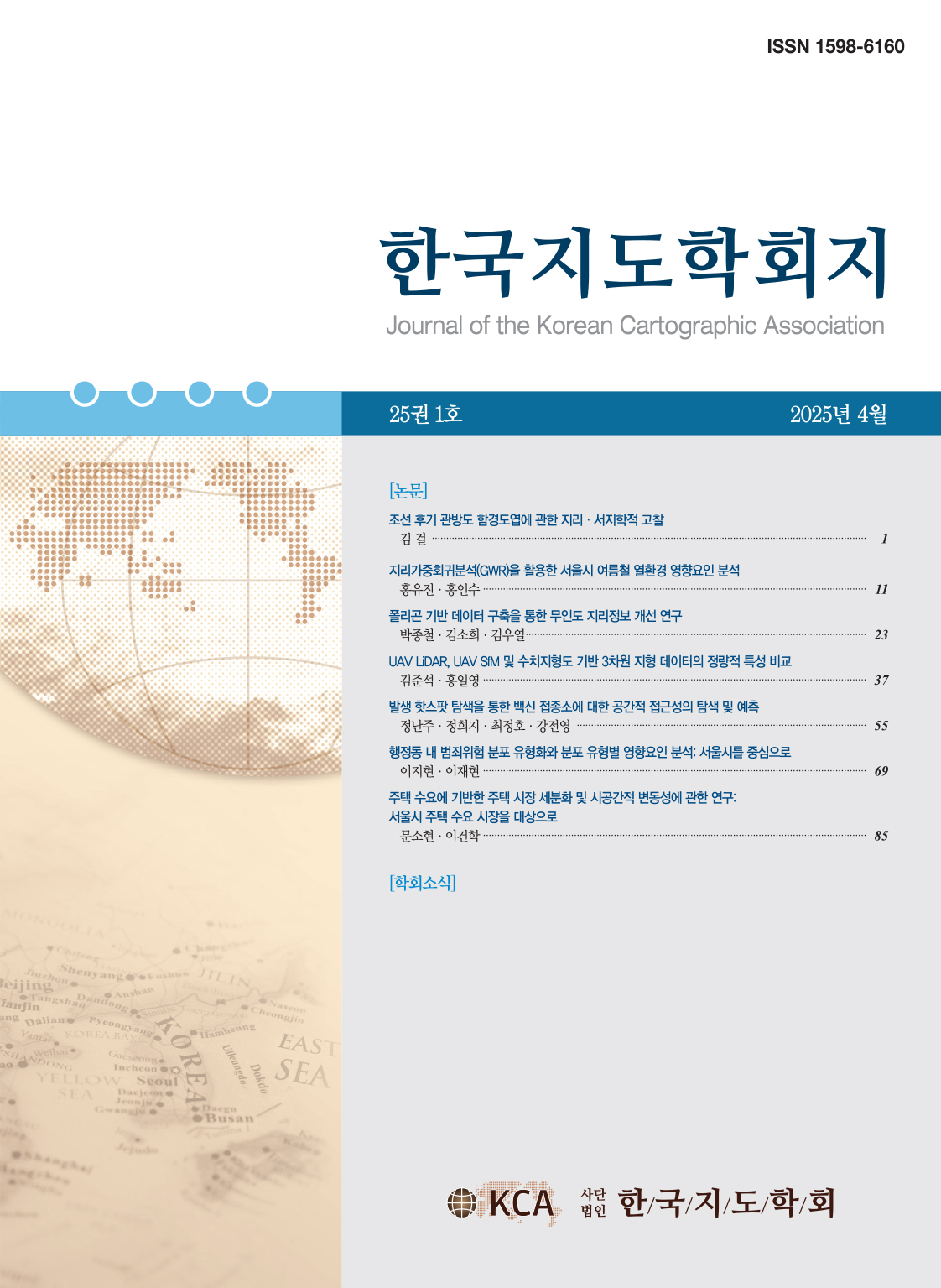Research Article
Abstract
References
Information
It has been over 50 years since South Korea began to build the expressway. However, no research has been conducted on the main facilities of the expressway itself. I analyzed the distribution and name characteristics of expressway junctions which are considered important among main facilities by drivers. As of June 2020, the analysis results of 108 junctions are as follows. The simple total number of junctions for each route was higher for the main trunk lines, but the number of junctions per unit distance was much higher for shorter lines. By region, junctions were concentrated around major cities such as Gyeonggi and Gyeongnam, but unlike the size of area, the number of junctions relative to the population was smaller on the contrary. In word type analysis, ‘Sino-Korea’ word was 99.1%. In syllable analysis, the number of syllable was averaged 2.17 and syllable of junction names has exponential distribution. In name source analysis, junction name related to administrative district name was outstanding with 87.0%; junction names related to town・township name and city・county・district name accounted for the major of that. These characteristics are largely influenced by ‘the criteria for granting facility names’ that follows the administrative district name first.
Key Words : Expressway, Junction, Distribution, Name
우리나라의 고속국도 건설 역사는 이미 50년이 넘었다. 그러나 고속국도의 주요 시설물들 자체에 대한 연구는 찾아볼 수 없었다. 주요 시설물 중 운전자들이 중요하게 여기는 분기점의 분포 및 명칭 특성을 분석하였다. 2020년 6월 현재 108개 분기점에 대한 분석 결과는 다음과 같다. 노선별 단순 총수는 주요 간선 노선들에 많지만, 단위 거리 당 분기점 수는 단거리 노선에 훨씬 더 많았다. 지역별로는 경기, 경남 등 대도시 주변에 집중되어 있었는데, 면적과는 달리 인구 대비 분기점 수는 오히려 더 적었다. 분기점 명칭의 어종은 99.1%가 한자어였으며, 평균 음절수는 2.17음절로 매우 짧고, 지수분포를 보였다. 명명 유연성 측면에서는 행정구역명 관련 분기점 명칭이 87.0%로 압도적이었으며, 그 중에서도 읍・면・동 관련 명칭과 시・군・구 관련 명칭이 대부분을 차지하였다. 어종, 음절 및 명명 유연성 특성은 행정구역명을 우선적으로 따르는 「시설물 명칭 부여 기준」의 영향이 크다.
- 계양구청, 2001, 「계양사」, 인천: 인천광역시 계양구.
- 국토지리정보원, 2008, 「한국지명유래집-중부편-」, 수원: 국토해양부 국토지리정보원.
- 국토지리정보원, 2010a, 「한국지명유래집-전라・제주편-」, 수원: 국토해양부 국토지리정보원.
- 국토지리정보원, 2010b, 「한국지명유래집-충청편-」, 수원: 국토해양부 국토지리정보원.
- 국토지리정보원, 2011, 「한국지명유래집-경상편-」, 수원: 국토해양부 국토지리정보원.
- 송호열, 2006, 「한국의 지명 변천」, 파주:(주)성지문화사.
- 송호열, 2017, “우리나라 대로명의 특성,” 한국지도학회지, 17(3), 41-58.
- 송호열, 2018a, “비수도권 도시철도 역명의 지역별 특성,” 한국지도학회지, 18(1), 29-48.
- 송호열, 2018b, “명명 유연성 관련 지명 유형 분류와 그 적용에 관한 고찰,” 한국지도학회 2018 춘계학술대회발표자료집, 51-68.
- 송호열, 2018c, “자연지명 및 인문지명 관련 도시철도 역명의 부적합성,” 한국지도학회지, 18(3), 45-66.
- 송호열, 2019, “우리나라 경찰서명의 특성: 1945년과 2018년의 비교를 중심으로,” 한국지도학회지, 19(1), 17-34.
- 송호열, 2020, “우리나라 세무서명의 특성 변화: 주요 변동 시기를 중심으로,” 한국지도학회지, 20(1), 37-65.
- 越智唯七, 1917, 「新舊對照朝鮮全道府郡面里洞名稱一覽」, 일본: 중앙시장.
- 이병태, 2002, 「김해지리지(국역판)」, 김해: 김해문화원.
- 한국도로공사, 2019, 「한국도로공사50년사: 1969-2019 : 50년의 자부심 세계로 미래로」, 김천:한국도로공사.
- 국가법령정보센터, http://www.law.go.kr
- 네이버지도, http://map.naver.com
- 네이버지식백과, http://terms.naver.com
- 대한민국 전자관보, http://gwanbo.mois.go.kr
- 위키백과, http://ko.wikipedia.org
- 카카오맵, http://map.kakao.com
- 통계청, http://www.kostat.go.kr
- 한국도로공사, http://www.ex.co.kr
- 「고속국도 등 도로 노선번호 및 노선명 관리지침」
- 「고속도로 노선도」
- 「노선별 관리현황」
- 「전국 고속도로 안내」
- Publisher :The Korean Cartographic Association
- Publisher(Ko) :한국지도학회
- Journal Title :Journal of the Korean Cartographic Association
- Journal Title(Ko) :한국지도학회지
- Volume : 20
- No :2
- Pages :1-11
- DOI :https://doi.org/10.16879/jkca.2020.20.2.001



 Journal of the Korean Cartographic Association
Journal of the Korean Cartographic Association





